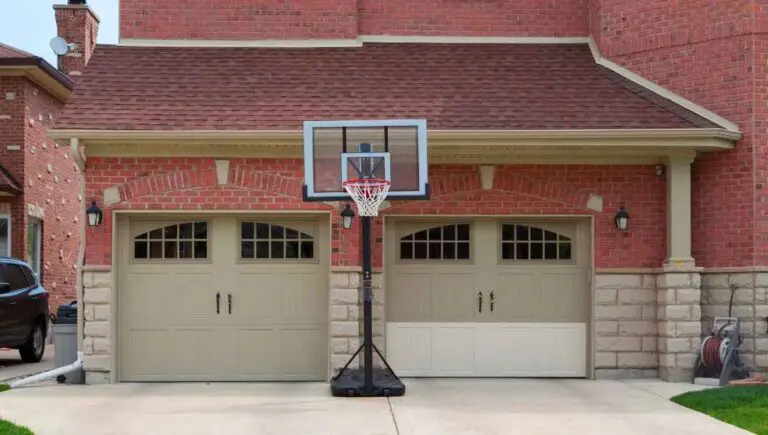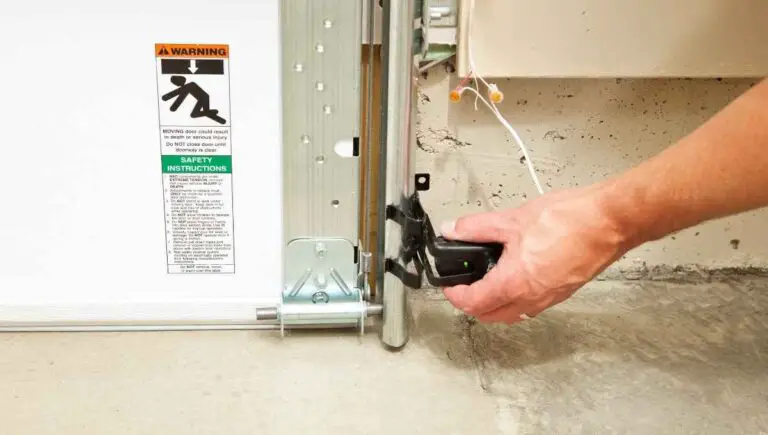Can I Put a Flag on My House? (Etiquette & How to Guide)

Displaying a flag on your house is a way to show your patriotism and pride for your country. But before you hoist the flagpole, it’s important to understand the rules and regulations surrounding the display of flags on private property.
You can put a flag on your house, but there are guidelines set by the United States Flag Code that you should follow. These guidelines cover the proper display of the flag, including the size, placement, and times when the flag should be flown.
In this blog post, we’ll dive into the details of the United States Flag Code and provide you with the information you need to properly display a flag on your house.
Whether you’re a seasoned flag-waver or just starting to show your patriotism, this guide will ensure that your flag display is both respectful and in compliance with the law.
This post contains affiliate links. This means Household Blogger may earn a commission should you make a purchase using any of our links. Please refer to our full affiliate disclosure policy for full details.
Here’s a Quick Pro Tip!
Hanging a flag from your home doesn’t have to be complicated. You’ve got two easy options, to either hang the flag directly off your home or to hang it separately, from a flagpole or another hanging option.
We’ve put together the best ways to do each option so that you don’t have to guess! Check out these great ways to hang a flag:
1. Telescoping Flagpole – This twenty-foot flagpole ensures that your flag is visible to all!
2. Wall Mount – Keep your flag close to home. This option allows you to easily hang and remove your flag at night.
3. Flag Stand – An easy way to plant a flag for your yard. Perfect for smaller, seasonal flags.
Making it Legal (Proper Flag Etiquette)
It’s perfectly legal to fly a flag outside your house, as long as you’re not flying the flag of a country your country is currently in conflict with. However, there are a few rules of thumb you should follow when you hang up your flags.
- If flying an American flag along with other countries’ flags, the American flag should be at the center. Otherwise, the flag should always be on the right side.
- The American flag should be raised first and lowered last when lowering flags.
- Each flag should be on its own pole (with the exception of a state flag being allowed underneath the American flag.
- All country flags should be at the same height (in times of peace.)
- If you are not removing the flags overnight, they should be lit.
- All country’s flags should be the same size.
- All flags should be flown hanging correctly.
- All flags should be in good shape. If they wear out, they should be properly retired.
In general, these rules are the accepted proper etiquette for flying a flag. However, there aren’t any laws surrounding the proper way to fly a flag, just to be respectful in your actions towards it.
This mostly holds true for the American flag, but you should show the same respect to any other country’s flag you decide you want to fly.
While the government may not have outlined exactly how to fly a flag in our laws, that doesn’t mean your homeowner’s association doesn’t have stricter rules. Therefore, if you live in a HOA, be sure to check the bylaws before adding a flag!
What About a Flagpole On the Lawn?
You are free to hang a flag from your home or to add a flagpole to your yard and fly it there. Either way, you are welcome to fly whatever kind of flags you would like. In addition, you can fly multiple flags if you have multiple poles or switch out the flag every morning if you prefer.
If you are installing your own flagpole, check your local ordinances to ensure you do not need a permit to install it. You also want to ensure your flagpole is the proper size for your home.
Your pole should be about the same size as your home so that pole does not overshadow the home and does not get lost on your lawn. However, this is more in line with being respectful of the flag; there aren’t any laws surrounding this issue.
Making it Aesthetic (How to Fly)
If you want to hang a flag on the front of your home, you can absolutely do so. You can either get yourself a flag hanger for your yard or purchase a flag mount that can attach directly to your home’s siding.
Did you know that you can also add a flagpole to your yard? It’s up to you (and your HOA, if applicable) where in your yard you want to put it. Many choose to install it in their front yard, but if it makes sense, you can install it in the side or even back yard.
You’ll want to choose your location based on where the flagpole will be seen most easily. In keeping with the rules, you want to respect the flag, which means not hiding it away where no one will see it.
For example, if your home has a street behind it and one on the side, it would make more sense for the pole to be behind the home, or on the side, versus the front because no one goes by the front, and it won’t be seen there.
The Best Ways to Display a Flag Outside
We’ve already touched on two great ways to display a flag: attaching it to your home’s siding and adding a flagpole to your yard. Which you choose is ultimately up to you.
Curious about how to install a flag mount on the side of your home? It’s not as hard as it sounds! Here’s how to do it:
- Choose where the mount will go. Remember, the pole will typically extend out at least six feet and often at an angle. Therefore, your mount should go in a place where the flag will not be obstructed by trees, brush, or other home decor.
- Mark the location of the bracket. Whether you’re placing the bracket on brick or vinyl siding, you’ll want to place the bracket where you want it to go and physically mark the spots where you will place the screws.
- Drill the holes. Please wear proper protective equipment for this step! This means protective goggles and gloves, at the very least! Also, you’ll need a powerful drill if you’re drilling into brick. The holes should be about a quarter inch deeper than the bracket’s screw length to ensure proper fits.
- Add the bracket’s anchors. Place the anchors in the freshly drilled holes to keep the screws in place.
- Carefully place the bracket. Hold the bracket in position and add the screws to anchor it in place.
- Add your flagpole with the attached flag, and you’re done!
Or, if you want to install a flagpole in your yard, you can do that too! Don’t worry; we’ve also got step-by-step instructions for the installation of a flagpole:
- Decide the best place for the flagpole. You’ll want to consider placement carefully. The ideal place for your flagpole will be a flat, open area where nothing will block the view of the flag. You’ll also need room for lights if you plan on keeping the flag up 24/7.
- Prepare the ground. You’ll need to dig a hole the proper size for your flagpole. You can either use a post digger or dig manually. The flagpole’s size will determine the hole’s size, but it is usually at least two feet deep. Once the hole is dug, place at least six inches of gravel into the bottom to ensure proper drainage.
- Add the stop bolt to the PVC sleeve. Place the stop bolt in its sleeve into the gravel. You’ll need to twist the bolt so it nestles into the gravel, leaving only about an inch exposed on top (aboveground.)
- Add your concrete. First, cover the sleeve to ensure no concrete can get into it. If you don’t want exposed concrete, only fill the hole until about two inches remain unfilled underground. If you want to see the concrete, fill it until it reaches the surface level, then smooth it out.
- Let the concrete set. If you bought quick set concrete, after about 30 minutes, you should be good to add your flagpole. The concrete doesn’t need to be completely hard at this point, but you should still brace the pole, so the concrete doesn’t get messed up.
- Then, simply add your flag and let it fly!
Of course, if you plan on leaving your flag flying overnight, you’ll also need to install some lights. Luckily, you don’t need to have wiring all the way out; there are plenty of solar and battery-powered options!
When and What to Fly
So, now that we’ve discussed how to hang your flag let’s chat about what flags you can and should fly. Now, it’s up to you whether you want to go patriotic with an American flag or choose something unique to show your creativity, like this seasonal flag set.
If you are hanging season flags, they can stay up overnight without issue. However, if you’re flying the American flag, protocol says you should take it down at night unless you’ve got a light shining on it.
What You Should Be Doing Overnight with the American Flag
However, there is no law against leaving the American flag up overnight; it’s just frowned upon. That being said, the U.S. flag code has been made for a reason, and citizens should respect it. Therefore, take it down at night if you don’t have lights illuminating your American flag.
You should take down your flag when the sun sets, and it should stay down (properly folded into a triangle) until the following morning, so long as the weather is appropriate. The flag should always be set upright and correctly.
You might also enjoy our post on Do Floodlights Need Planning Permission?
Inclement Weather and the American Flag
In cases of bad weather, such as rain or hail, you should take down flags for protection. The only exception to this rule is if you have an all-weather flag. If the flag has been damaged, it should be properly retired.
However, as long as your flag is durable and able to handle the weather, you have every right to fly it all day, every day. If, on the other hand, you only want to fly it on special occasions, here are the days you should have it flying (weather permitting):
- New Year’s Day, January First
- Inauguration Day, January 20th
- Martin Luther King Jr.’s birthday, the third Monday in January
- Lincoln’s Birthday, February 12th
- Washington’s Birthday, the third Monday in February
- Easter Sunday (variable)
- Mother’s Day, the second Sunday in May
- Armed Forces Day, the third Saturday in May
- Memorial Day (half-staff until noon), the last Monday in May
- Flag Day, June 14th
- Father’s Day, the third Sunday in June
- Independence Day, July Fourth
- Labor Day, the first Monday in September
- Constitution Day, September 17th
- Columbus Day, the second Monday in October
- Navy Day, October 27th
- Veterans Day, November 11th
- Thanksgiving Day, the fourth Thursday in November
- Christmas Day, December 25th
- Other days as may be proclaimed by the President of the United States
- the birthdays of States (date of admission)
- Other State holidays
Inclement Weather and Other Flags
If you are hanging flags that are not State or U.S. flags, you can hang them whenever you want. You can keep them out overnight and in bad weather without fear of breaking laws or codes.
However, if you want to keep your flags in optimal condition, you should still follow the same procedures for the American flag. This means taking it down during bouts of bad weather and treating it with respect.
Final Thoughts
Whether you’re looking to add an American flag to your house or just want to be able to fly your own personal flags, it’s easy to add a flagpole or flag mount to your home or yard.
To get the most from your flag, it should only fly during the day and in nice weather. It should have a light source if you are flying the U.S. flag and want to leave it up overnight.
If you are in doubt about what is legal for your flag, remember to check the U.S. flag code for full rules and recommendations. Additionally, if you live in a Homeowners Association, be sure to check their bylaws for further instructions, then let your flag fly!










